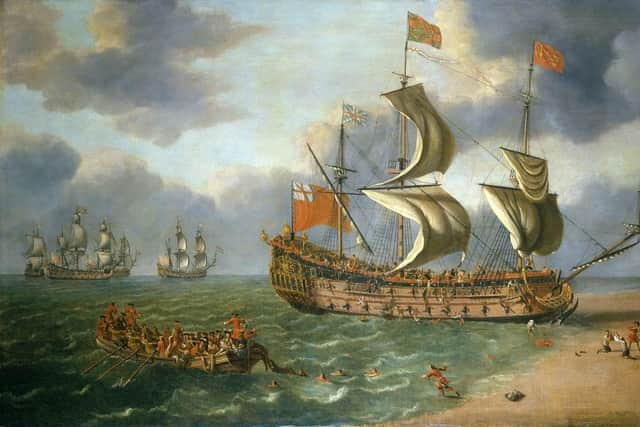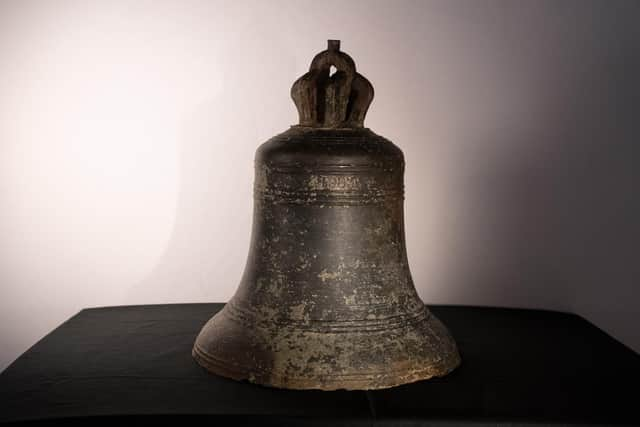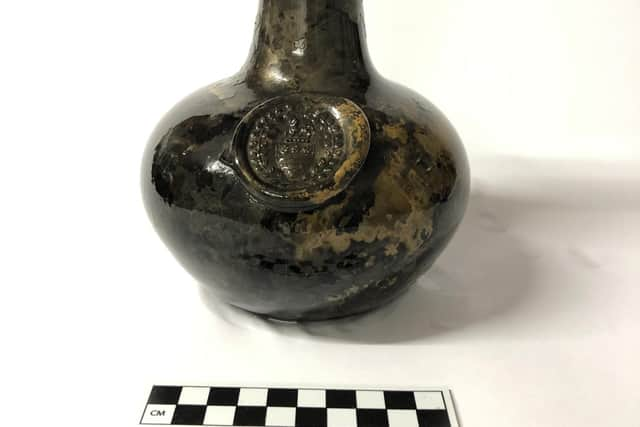Royal warship’s wreckage found off coast of Norfolk after sinking in 1682
and live on Freeview channel 276
The HMS Gloucester was destined for Edinburgh when she ran aground some 28 miles off Great Yarmouth following a dispute between James, then the Duke of York, and the ship’s pilot James Ayres about navigating the treacherous Norfolk sandbanks.
She sank within an hour at 5.30am on May 6, killing around 130 to 250 crew and passengers.
Advertisement
Hide AdAdvertisement
Hide AdJames barely survived, abandoning ship a the last minute and costing the lives as no one could flee before royalty.


He went on to reign as King James II of England and Ireland and James VII of Scotland from 1685 until 1688, when he was deposed by the Glorious Revolution.
James denied responsibility for the sinking and demanded Mr Ayres be hanged. The pilot was later court-martialled and imprisoned.
The wreck was found in 2007 by brothers Julian and Lincoln Barnwell, together with others, following a four-year search over 5,000 nautical miles.
Advertisement
Hide AdAdvertisement
Hide AdThey had to confirm its identity and protect an ‘at risk’ site in international waters, meaning the find can only now be made public.


It has been described as the most important maritime discovery since the Mary Rose, the warship from the Tudor navy of King Henry VIII which sank in battle in the Solent in 1545. She was raised in 1982 and is on display in Portsmouth.
Lincoln Barnwell said: “It was our fourth dive season looking for Gloucester.
“We were starting to believe that we were not going to find her, we’d dived so much and just found sand.
Advertisement
Hide AdAdvertisement
Hide Ad“The first thing I spotted were large cannon laying on white sand, it was awe-inspiring and really beautiful.


“It instantly felt like a privilege to be there, it was so exciting.
“We were the only people in the world at that moment in time who knew where the wreck lay. That was special and I’ll never forget it.”
Prof Claire Jowitt, of the University of East Anglia, said a major exhibition is planned for Spring 2023, the result of a partnership between the Barnwell brothers, Norfolk Museums Service, and the university.
Advertisement
Hide AdAdvertisement
Hide AdShe added: “The discovery promises to fundamentally change understanding of 17th-century social, maritime and political history.”


The Gloucester represents an important ‘almost’ moment in British political history, causing the near-death of the Catholic heir to the Protestant throne at a time of great political and religious tension.
The ship was commissioned in 1652, built at Limehouse in London, and launched in 1654.
In 1682 she was selected to carry James to Edinburgh to collect his heavily pregnant second wife, Mary of Modena, and return to London for the birth of a legitimate male heir.
Advertisement
Hide AdAdvertisement
Hide AdWhen found, the ship was split down the keel and the remains of the hull were submerged in the sand.
Her bell was used by the Receiver of Wreck and Ministry of Defence to identify the vessel as the HMS Gloucester.
Artefacts found include clothes and shoes, navigational and other professional naval equipment, personal possessions, and many wine bottles.
One of the bottles bears a glass seal with the crest of the Legge family – ancestors of George Washington – a forerunner to the Stars and Stripes flag.
.
Comment Guidelines
National World encourages reader discussion on our stories. User feedback, insights and back-and-forth exchanges add a rich layer of context to reporting. Please review our Community Guidelines before commenting.